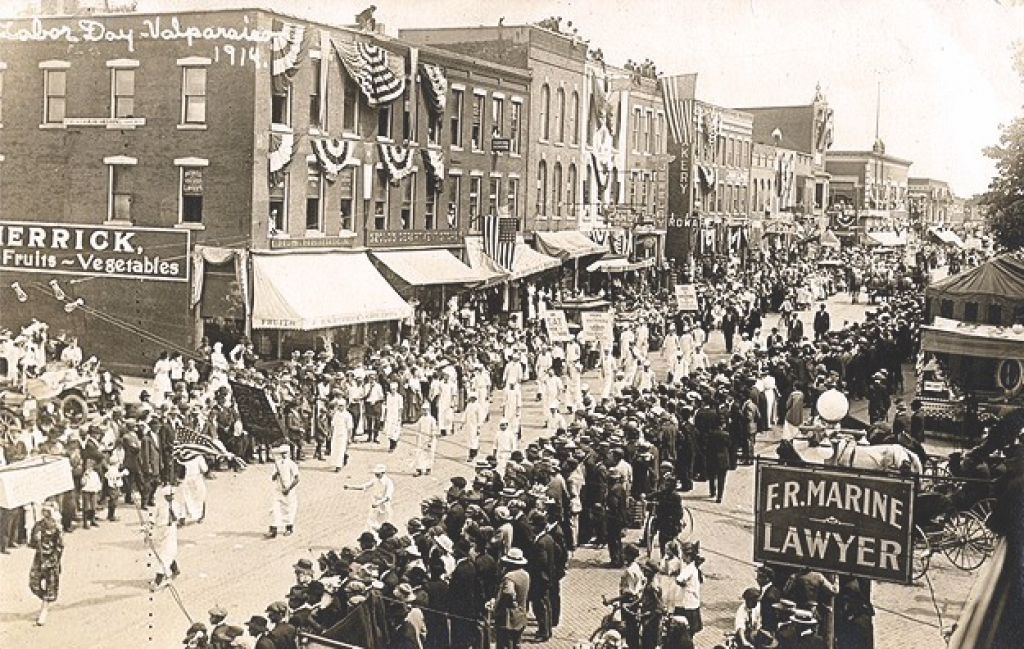 Labor Day pays tribute to the contributions and achievements of American workers. Traditionally observed on the first Monday in September, Labor Day 2019 occurs on Monday, Sept. 2.
Labor Day pays tribute to the contributions and achievements of American workers. Traditionally observed on the first Monday in September, Labor Day 2019 occurs on Monday, Sept. 2.
Created by the Labor Movement in the late 19th century, Labor Day became a federal holiday in 1894.
Today, Labor Day also symbolizes the end of summer for many Americans, and is celebrated with parties, parades and athletic events. But the annual celebration of workers and their achievements originated during one of American labor history’s most dismal chapters.
INDUSTRIAL REVOLUTION
In the late 1800s, at the height of the Industrial Revolution in the United States, the average American worked 12-hour days and seven-day weeks in order to eke out a basic living. Despite restrictions in some states, children as young as five or six toiled in mills, factories and mines across the country, earning a fraction of their adult counterparts’ wages.
People of all ages, particularly the very poor and recent immigrants, often faced extremely unsafe working conditions, with insufficient access to fresh air, sanitary facilities and breaks.
As manufacturing increasingly supplanted agriculture as the wellspring of American employment, labor unions, which had first appeared in the late 18th century, grew more prominent and vocal. They began organizing strikes and rallies to protest poor conditions and compel employers to renegotiate hours and pay.
Many of these events turned violent during this period, including the infamous Haymarket Riot of 1886, in which several Chicago policemen and workers were killed. Others gave rise to longstanding traditions: On September 5, 1882, some 10,000 workers took unpaid time off to march from City Hall to Union Square in New York City, holding the first Labor Day parade in U.S. history.
‘WORKINGMEN’S HOLIDAY’
The idea of a “workingmen’s holiday,” celebrated on the first Monday in September, caught on in other industrial centers across the country, and many states passed legislation recognizing it. Congress would not legalize the holiday until 12 years later, when a watershed moment in American labor history brought workers’ rights squarely into the public’s view.
On May 11, 1894, employees of the Pullman Palace Car Company in Chicago went on strike to protest wage cuts and the firing of union representatives.
On June 26, the American Railroad Union, led by Eugene V. Debs, called for a boycott of all Pullman railway cars, crippling railroad traffic nationwide. To break the strike, the federal government dispatched troops to Chicago, unleashing a wave of riots that resulted in the deaths of more than a dozen workers.
In the wake of this massive unrest and in an attempt to repair ties with American workers, Congress passed an act making Labor Day a legal holiday in the District of Columbia and the territories.
FOUNDER OF LABOR DAY
More than 100 years after the first Labor Day observance, there is still some doubt as to who first proposed the holiday for workers.
Many credit Peter J. McGuire, cofounder of the American Federation of Labor, while others have suggested that Matthew Maguire, a secretary of the Central Labor Union, first proposed the holiday.
THE FIRST LABOR DAY
The first Labor Day holiday was celebrated on Tuesday, Sept. 5, 1882, in New York City, in accordance with the plans of the Central Labor Union. Since it was not yet an official holiday, many workers lost a day’s pay in order to participate.
The Central Labor Union held its second Labor Day holiday just a year later, on September 5, 1883.
In 1884, the first Monday in September was selected as the holiday, as originally proposed, and the Central Labor Union urged similar organizations in other cities to follow the example of New York and celebrate a “workingmen’s holiday” on that date.
The idea spread with the growth of labor organizations, and in 1885 Labor Day was celebrated in many industrial centers of the country.
A NATIONWIDE HOLIDAY
The form that the observance and celebration of Labor Day should take was outlined in the first proposal of the holiday — a street parade to exhibit to the public “the strength and esprit de corps of the trade and labor organizations” of the community, followed by a festival for the recreation and amusement of the workers and their families.
This became the pattern for the celebrations of Labor Day. Speeches by prominent men and women were introduced later, as more emphasis was placed upon the economic and civic significance of the holiday.
Still later, by a resolution of the American Federation of Labor convention of 1909, the Sunday preceding Labor Day was adopted as Labor Sunday and dedicated to the spiritual and educational aspects of the Labor Movement.
MODERN CELEBRATIONS
The character of the Labor Day celebration has undergone changes over the years, with many outside the Labor Movement viewing it as nothing more than a holiday to mark the end of summer and the start of the back-to-school season.
However, for those in the Labor Movement and many others, the holiday and parades are a recognition of the vital force of Labor and how it has added materially to the highest standard-of-living and the greatest production the world has ever known, bringing us closer to the realization of our traditional ideals of economic and political democracy.
(Sources: U.S. Department of Labor and History.com)

